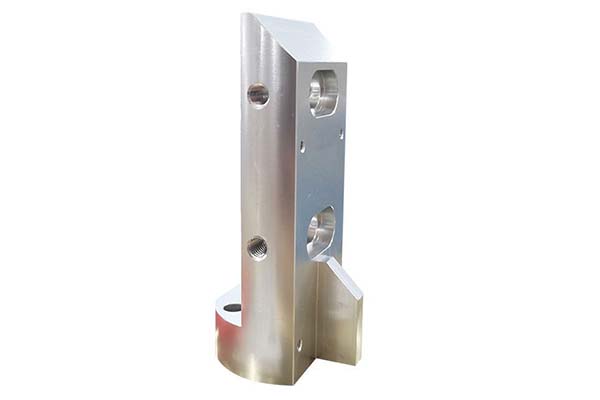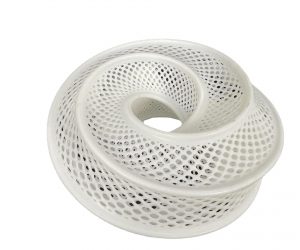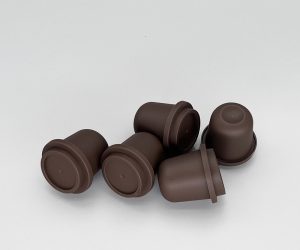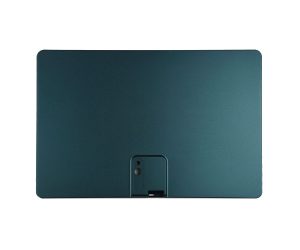What are Precision Prototypes?
Precision prototypes are highly accurate and detailed preliminary models of a product or component. They are crafted with extreme precision, often using advanced manufacturing techniques and high - quality materials, to closely mimic the final product in terms of form, fit, and function. These prototypes are not just rough approximations but are designed to be as close to the end - product as possible, with tight tolerances and exact specifications.
In the product development cycle, precision prototypes play a crucial role. They serve as a tangible representation of the design concept, allowing engineers, designers, and stakeholders to evaluate the design's feasibility, functionality, and aesthetics before moving on to full - scale production. This early - stage evaluation can help identify potential design flaws, manufacturing issues, or areas for improvement, saving both time and cost in the long run.
Applications in Different Industries
- Automotive Industry
- In the automotive sector, precision prototypes are used extensively. For example, when developing a new car model, manufacturers create precision prototypes of engine components. A prototype of a high - performance engine cylinder head, made with precision machining techniques, can be tested for its ability to withstand high - pressure and high - temperature conditions. These prototypes are designed with tolerances in the range of a few thousandths of an inch. A study by a leading automotive research firm found that by using precision prototypes in engine development, companies were able to reduce the number of design iterations in production by up to 30%, leading to significant cost savings.
- Exterior body panels are also prototyped with high precision. A prototype car body panel made from lightweight composite materials needs to have exact dimensions to ensure a perfect fit on the vehicle chassis. This not only affects the aerodynamics of the car but also its overall structural integrity. Precision prototypes allow automotive engineers to test different design concepts for body panels, such as different shapes for better air - flow management, before mass production.
- Aerospace Industry
- In aerospace, the margin for error is extremely small, and thus precision prototypes are of utmost importance. When developing a new aircraft wing, for instance, a precision prototype is built to test the wing's aerodynamic performance in wind tunnels. These prototypes are made with advanced 3D printing or CNC machining techniques, ensuring that every curve and surface is accurate to within a fraction of a millimeter.
- Components for spacecraft are also prototyped with precision. A prototype of a satellite's communication antenna, built with high - precision manufacturing methods, needs to have exact specifications to ensure optimal signal reception and transmission in the harsh environment of space. According to a report by an aerospace industry association, the use of precision prototypes in aerospace product development has led to a 25% reduction in the failure rate of newly launched satellites in the past decade.
- Medical Device Industry
- In the medical field, precision prototypes are used to develop life - saving devices. For example, when creating a new type of implantable cardiac pacemaker, a precision prototype is made to test its size, shape, and functionality. The prototype needs to be an exact replica of the final product in terms of its dimensions to ensure easy implantation in the human body. It also needs to accurately mimic the electrical and mechanical functions of the real device for thorough testing.
- Surgical instruments are another area where precision prototypes are crucial. A prototype of a new minimally - invasive surgical tool, made with precision manufacturing, allows surgeons to test its ergonomics and functionality during simulated surgeries. This helps in refining the design to make the tool more user - friendly and effective in actual surgical procedures.
How to Create Precision Prototypes
Materials Selection
The choice of materials is fundamental when creating precision prototypes as it directly impacts the prototype's performance, durability, and functionality.
- Common Metals
- Aço inoxidável: Stainless steel is a popular choice for precision prototypes in many industries, especially those with high - corrosion resistance requirements. It has excellent strength and can maintain its integrity in harsh environments. For example, in the medical device industry, when prototyping surgical instruments, stainless steel is often used. Its corrosion - resistant properties ensure that the instruments remain sterile and functional over time. The 304 and 316 grades of stainless steel are particularly common. 304 stainless steel offers good general - purpose corrosion resistance, while 316 stainless steel, which contains molybdenum, has enhanced resistance to chloride corrosion, making it suitable for marine or highly corrosive medical applications.
- Aluminum Alloys: Aluminum alloys are widely used due to their low density, high strength - to - weight ratio, and good thermal conductivity. In the aerospace industry, for instance, aluminum alloy prototypes are often created for aircraft components such as wing ribs and fuselage parts. The 6061 - T6 aluminum alloy is a common choice. It has good machinability, which is crucial for creating precision - shaped components through CNC machining. This alloy can be easily formed into complex shapes while maintaining its structural integrity, and its relatively low weight helps in reducing the overall weight of the aircraft, thereby improving fuel efficiency.
- ABS (Acrylonitrile Butadiene Styrene): ABS is a versatile plastic that is often used for precision prototypes, especially in the consumer electronics and automotive industries for prototyping parts like housings and interior components. It has good impact resistance, dimensional stability, and can be easily 3D - printed or injection - molded. For example, when prototyping a smartphone case, ABS can be used to create a functional and aesthetically pleasing prototype. It can be colored, textured, or polished to closely mimic the final product appearance, and its impact - resistant properties ensure that the prototype can withstand normal handling without cracking or breaking.
- PEEK (Polyether Ether Ketone): PEEK is a high - performance thermoplastic with exceptional mechanical properties, chemical resistance, and high - temperature stability. In the aerospace and medical industries, PEEK is used for prototyping critical components. In aerospace, it can be used to prototype parts that need to withstand high - temperature and high - stress environments, such as engine components. In the medical field, PEEK is used for prototyping implantable devices due to its biocompatibility. However, PEEK is more expensive and more difficult to process compared to ABS, which is a consideration when choosing materials for prototypes.
Cerâmica are used in applications where high - temperature resistance, wear resistance, and chemical inertness are required. In the aerospace and electronics industries, ceramic precision prototypes are common. For example, in the production of high - power electronic components, ceramic substrates are prototyped to provide excellent thermal conductivity and electrical insulation. Alumina ceramics are often used due to their high hardness, good electrical insulating properties, and relatively low cost compared to some other advanced ceramics. They can be machined to high tolerances using specialized diamond - tipped tools, making them suitable for creating precision prototypes.
Manufacturing Technologies
- Impressão 3D
- SLA (Stereolithography): SLA is a popular 3D - printing technology for creating precision prototypes. It works by using a UV laser to cure a liquid photopolymer resin layer by layer. SLA offers high precision, with a typical accuracy of ±0.05 - 0.1mm, and can produce parts with smooth surfaces. It is ideal for creating prototypes with complex geometries and fine details, such as jewelry wax - like models, dental prosthetics, and small - scale mechanical components. For example, a jewelry designer can use SLA 3D printing to create a highly detailed prototype of a new ring design, with intricate patterns and smooth curves. However, SLA - printed parts are often brittle and may not be suitable for applications that require high mechanical strength.
- SLS (Selective Laser Sintering): SLS uses a high - power laser to sinter powdered materials, such as nylon, together to form a solid object. It can produce parts with good mechanical properties, including high strength and durability. SLS is suitable for creating functional prototypes, such as automotive parts, tooling, and engineering components. For instance, an automotive engineer can use SLS to create a prototype of a new engine bracket. The SLS - printed bracket can be tested for its strength and fit in the engine compartment. However, SLS - printed parts may have a rough surface finish, which may require post - processing such as sanding or coating to achieve the desired appearance.
- Usinagem CNC
CNC (Computer Numerical Control) machining is a subtractive manufacturing process that uses computer - controlled machines to remove material from a solid block to create the desired shape. CNC machining offers high precision, with tolerances as low as ±0.001mm in some cases. It can work with a wide range of materials, including metals, plastics, and composites. For example, in the aerospace industry, CNC machining is used to create precision prototypes of aircraft engine components. A titanium alloy turbine blade can be machined with high precision using CNC milling machines. The process allows for the creation of complex geometries with tight tolerances, ensuring that the prototype accurately represents the final product. However, CNC machining can be time - consuming, especially for complex parts, and requires skilled operators and expensive equipment.
- EDM (Electrical Discharge Machining)
EDM is a non - traditional machining process that uses electrical discharges to erode material from a workpiece. It is particularly useful for creating precision prototypes of parts with complex shapes and hard materials that are difficult to machine using traditional methods. In the mold - making and tool - and - die industries, EDM is often used to create prototypes of intricate molds. For example, a prototype of a plastic injection mold with fine internal features can be created using EDM. The process can achieve high precision, but it is relatively slow and can be costly due to the need for specialized equipment and electrode materials.
The following Yigu Technology table summarizes the key characteristics of these manufacturing technologies for precision prototypes:
| Manufacturing Technology | Precision (Typical Tolerances) | Material Compatibility | Suitable for Complex Geometries | Acabamento de superfície | Production Speed | Cost |
| SLA 3D Printing | ±0.05 - 0.1mm | Photopolymer resins | High | Smooth | Moderate | Medium - High (equipment and resin cost) |
| SLS 3D Printing | ±0.1 - 0.3mm | Powdered materials (e.g., nylon) | High | Rough (requires post - processing) | Moderate | High (equipment and powder cost) |
| Usinagem CNC | ±0.001 - 0.05mm | Metals, plastics, composites | High (with multi - axis machines) | Good (depends on machining parameters) | Varies (slow for complex parts) | High (equipment and labor cost) |
| EDM | ±0.001 - 0.02mm | Hard metals, conductive materials | High | Good (but may require post - processing) | Slow | High (equipment and electrode cost) |
Yigu Technology's Approach to Precision Prototypes
At Yigu Technology, we have developed a comprehensive and meticulous approach to creating precision prototypes that sets us apart in the industry. Our expertise is backed by years of experience and a deep understanding of the needs of various industries.
Frequently Asked Questions about Precision Prototypes
What is the typical lead - time for creating precision prototypes?
The lead - time for precision prototypes can vary depending on several factors. For relatively simple prototypes made with common materials and using 3D - printing technologies like SLA, the production time can be as short as 3 - 5 business days. This is because SLA 3D printing can quickly build parts layer by layer from a digital model.
However, for more complex prototypes that require CNC machining, especially those with intricate geometries and tight tolerances, the lead - time can be longer, usually around 7 - 14 business days. CNC machining involves removing material from a solid block, which is a more time - consuming process, especially when multiple operations such as milling, turning, and drilling are required.
If the prototype involves the use of specialized materials that need to be sourced or custom - processed, or if there are complex post - processing requirements such as surface finishing or heat - treatment, the lead - time could be extended to 2 - 3 weeks.
How much do precision prototypes cost?
The cost of precision prototypes is influenced by multiple elements. Material cost is a significant factor. For example, using a high - end engineering plastic like PEEK will be more expensive than a common plastic such as ABS. PEEK can cost several times more per kilogram, which directly impacts the overall cost of the prototype.
The complexity of the design also plays a crucial role. A simple, single - piece prototype with basic geometries will be much more affordable than a multi - component prototype with complex internal structures and fine details. In 3D printing, complex designs may require more support structures during printing, which increases material usage and thus cost. In CNC machining, complex designs may need more machining operations and longer machining times, driving up the cost.
The manufacturing technology used also affects the cost. Generally, 3D - printing technologies like SLS, which use expensive powdered materials and high - cost equipment, tend to be more costly for the same - sized prototype compared to SLA 3D printing. CNC machining, especially when using multi - axis machines and highly skilled operators, can also be relatively expensive due to equipment and labor costs. A small, simple SLA - printed plastic prototype might cost as little as \(100 - \)300, while a complex CNC - machined metal prototype could cost \(1000 - \)5000 or more.
Conclusion
Precision prototypes are the cornerstone of successful product development across a wide range of industries. They enable companies to test, refine, and validate their product designs before mass production, reducing risks, costs, and time - to - market. The choice of materials and manufacturing technologies, as we have seen, is crucial in determining the quality and functionality of these prototypes.
Yigu Technology is committed to providing top - notch precision prototype solutions. Our design collaboration process ensures that we fully understand your needs and translate them into innovative and functional prototypes. With our advanced quality assurance systems in production, you can be confident that the prototypes we deliver meet the highest standards of precision and quality.
If you are in the process of developing a new product and need reliable precision prototypes, don't hesitate to reach out to Yigu Technology. Our team of experts is ready to assist you every step of the way, from the initial design concept to the final prototype delivery. Contact us today and take the first step towards bringing your product ideas to life with precision and efficiency.



